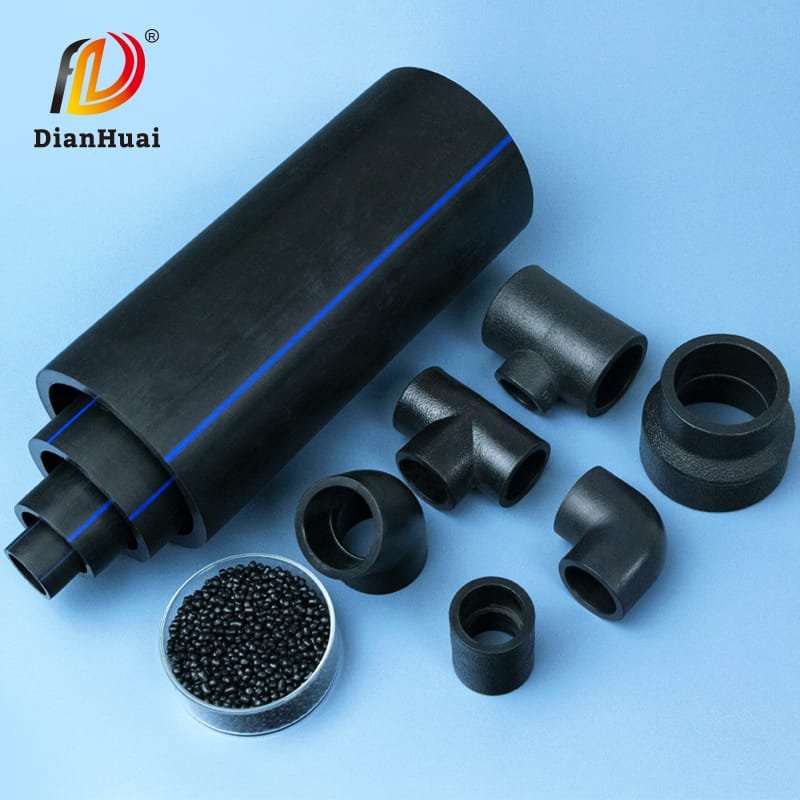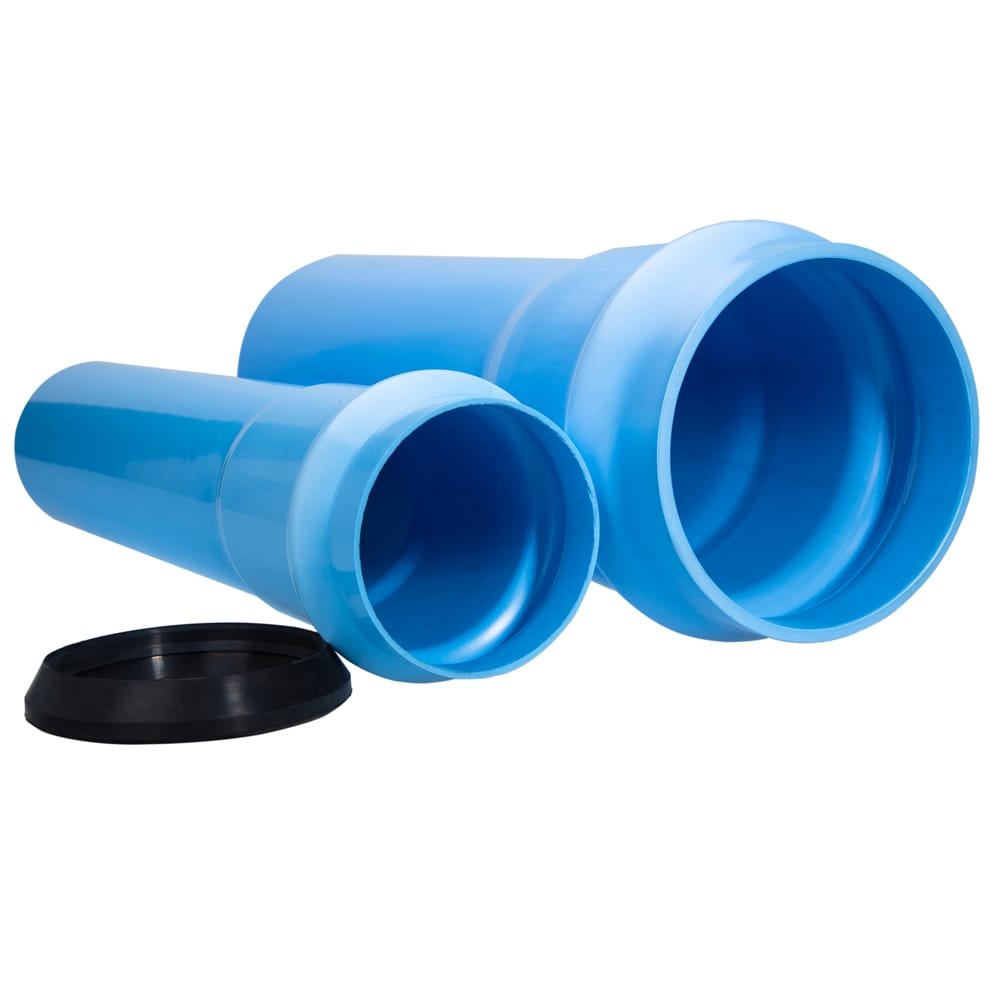PVC pipe vs PE Pipe: A Comprehensive Comparison of Key Differences
Choosing between PVC أنبوب و أنبوب PE can be a crucial decision for construction, plumbing, and industrial applications. Both types of pipes offer distinct advantages depending on the specific requirements of the project. This article explores the key differences between PVC pipe and PE pipe, covering five important factors: raw material composition, المرونة, corrosion resistance, applications, and installation/maintenance. Whether you’re looking for affordable pipes for a small project or durable pipes for a large-scale industrial operation, this guide will help you make an informed choice.
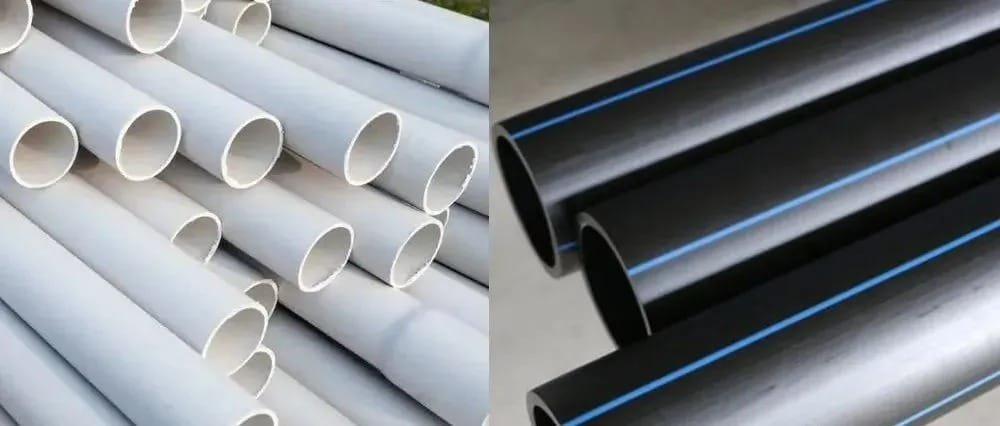
1. Raw Material Comparison: PVC pipe vs PE Pipe
PVC Pipe:
بولي كلوريد الفينيل (Polyvinyl Chloride) pipes are made from polyvinyl chloride resin, a material known for its lightweight, low-cost, و corrosion-resistant properties. However, PVC أنبوب tend to have lower impact resistance, making them more prone to cracking, especially in cold weather or environments with extreme temperatures. PVC pipe benefits include affordability, but its disadvantages include a higher risk of breakage under impact.

PE Pipe:
بي (Polyethylene) pipes are manufactured using polyethylene resin, a material with superior flexibility and strength. أنبوب PE have excellent impact resistance and can withstand low temperatures much better than PVC. As a result, أنبوب PE are widely used in demanding environments and for applications requiring high durability و long-lasting performance.

2. Flexibility Comparison: pvc pipe vs pe Pipe Flexibility
PE Pipe:
The flexibility of PE pipe is one of their strongest attributes. These pipes can be coiled for easy transport, and their flexible design helps reduce the risk of damage from external pressure, such as from soil shifts or concrete installation. This makes أنبوب PE ideal for industrial applications, underground installations, and areas with high potential for ground movement. However, أنبوب PE are less commonly used for residential plumbing due to their specialized installation requirements.
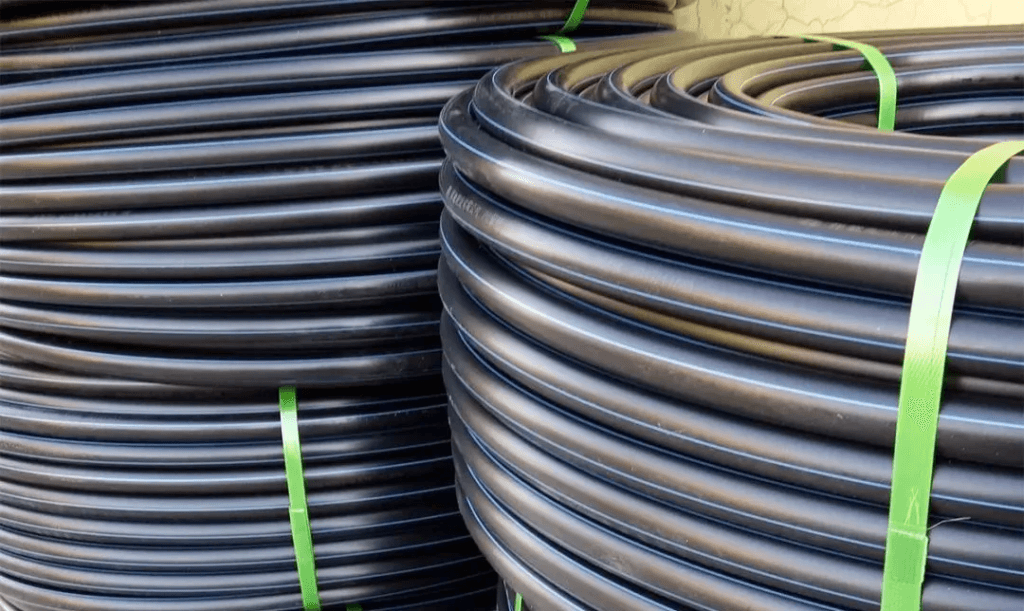
PVC Pipe:
PVC pipes are more rigid and less flexible compared to أنبوب PE. While they maintain a straight shape and appearance, PVC pipe rigidity can be a disadvantage in environments where bending or flexing is necessary. Their lack of flexibility also makes them more susceptible to breakage under impact. However, this rigidity ensures that PVC أنبوب are easy to install in areas where pipe alignment is important.
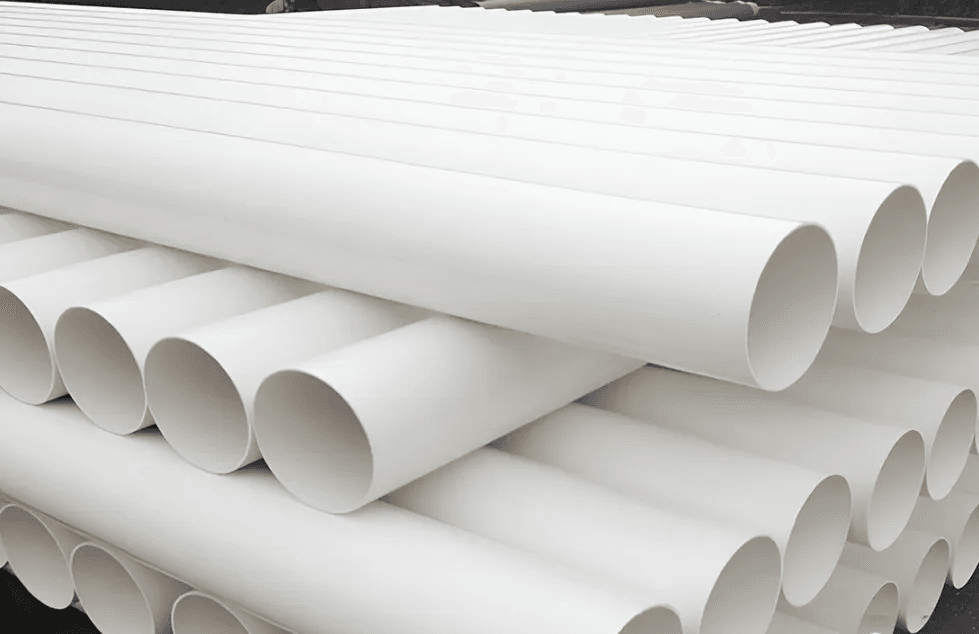
3. Corrosion Resistance: PVC pipe vs PE Pipe Durability
PVC Pipe:
PVC أنبوب offer good resistance to most chemicals and general corrosion, making them suitable for a wide range of plumbing and drainage applications. However, بولي كلوريد الفينيل may degrade when exposed to certain organic solvents or oils. In environments with aggressive chemical exposure, أنبوب PE often outperform بولي كلوريد الفينيل in terms of long-term durability and corrosion resistance.
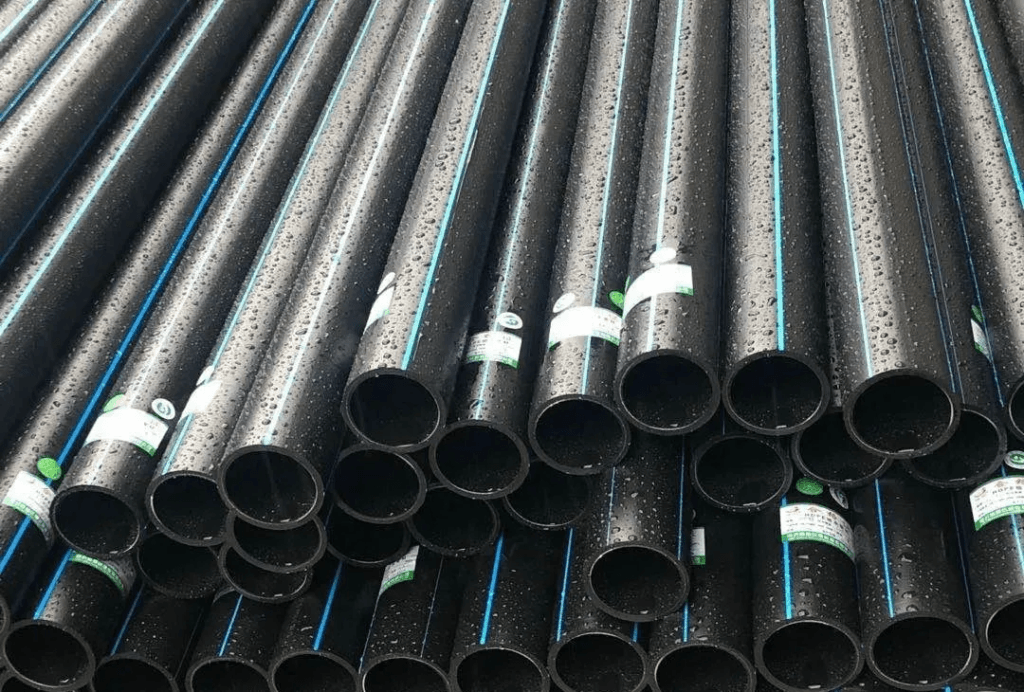
PE Pipe:
The corrosion resistance of PE pipe is one of their strongest advantages. They are highly resistant to a variety of chemicals, including acids, alkalis, و saltwater, which makes أنبوب PE ideal for use in marine environments, industrial settings, and agricultural systems. If you need pipes that can stand up to harsh chemicals and extreme conditions, أنبوب PE are a superior choice over PVC أنبوب.
4. Applications: Where to Use PVC pipe and PE Pipes
PVC Pipe:
PVC أنبوب are commonly used for drainage systems, sewage pipes, rainwater collection, و electrical conduit systems. Because of their low cost and ease of installation, PVC أنبوب are a popular choice for municipal plumbing, residential applications, and small to medium-scale projects. Their cost-effectiveness makes them ideal for large-scale projects where budget is a concern, such as construction projects و irrigation systems.
PE Pipe:
Due to their strength و durability, أنبوب PE are used in more demanding applications, مشتمل water supply, gas transportation, mining water systems, irrigation systems, و industrial water distribution. The superior impact resistance و chemical resistance of أنبوب PE make them ideal for high-risk environments, where the pipes need to withstand external pressures, chemicals, and extreme temperatures.
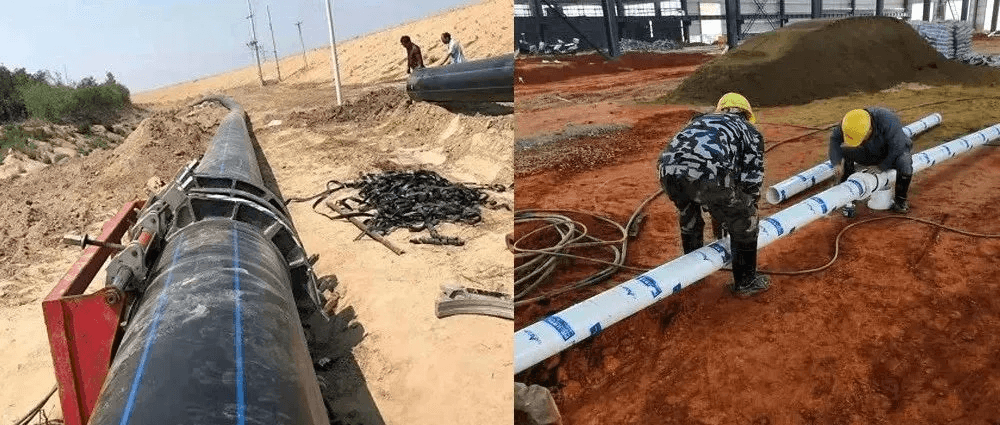
5. Installation and Maintenance: Ease of Installation and Long-Term Maintenance Costs
PVC Pipe:
Installing PVC أنبوب is relatively straightforward. They typically use glue or rubber ring connectors, making them easy to assemble. However, since PVC أنبوب are more susceptible to cracking under impact, extra care is needed during the installation process to avoid damage. While PVC أنبوب are generally easy to maintain and have low long-term repair costs, a break in the pipe may require the entire section to be replaced, leading to higher maintenance costs.
PE Pipe:
PE pipe installation is more complex and typically requires fusion welding or electrofusion methods, which require specialized equipment and trained professionals. While the installation process is more costly, PE pipes offer superior impact resistance and can handle greater pressures. The maintenance costs for PE pipes are typically lower, as damaged sections can be repaired without replacing the entire pipe, reducing the overall cost of maintenance.

Conclusion: Choosing the Right Pipe for Your Needs
When deciding between PVC pipes و PE pipes, it’s important to consider the specific needs of your project. PVC pipes are perfect for cost-sensitive applications that don’t require high impact resistance or chemical resistance. On the other hand, if you need a high-performance solution for environments with extreme conditions, high corrosion resistance, and the ability to withstand impact, PE pipes are the superior option.
保持关注

